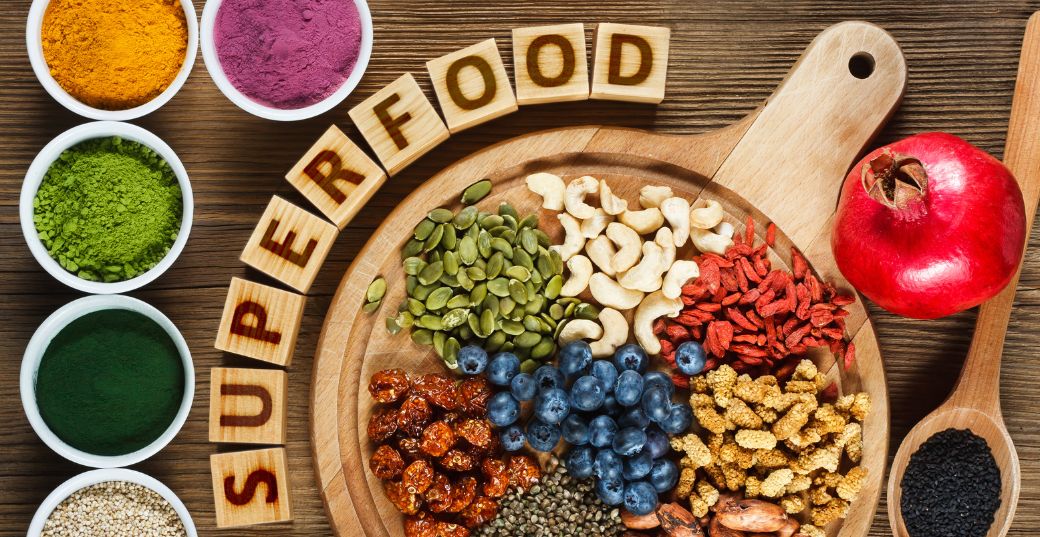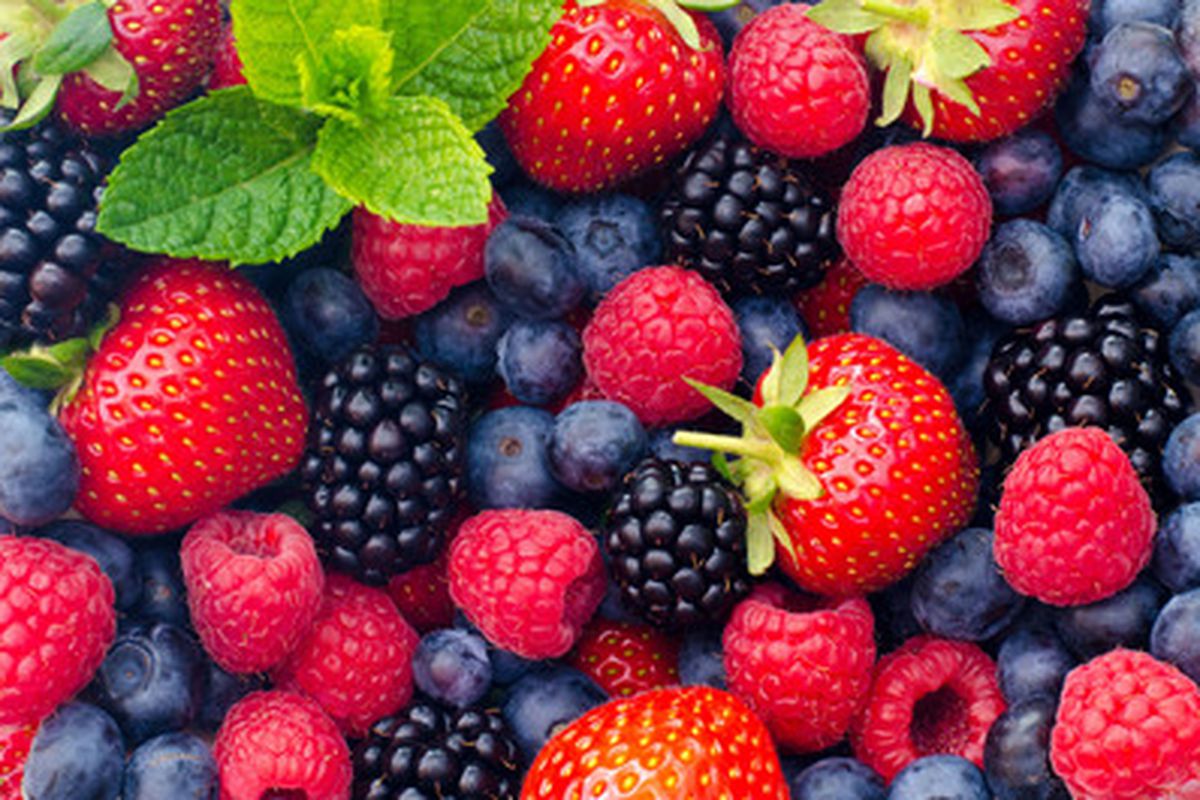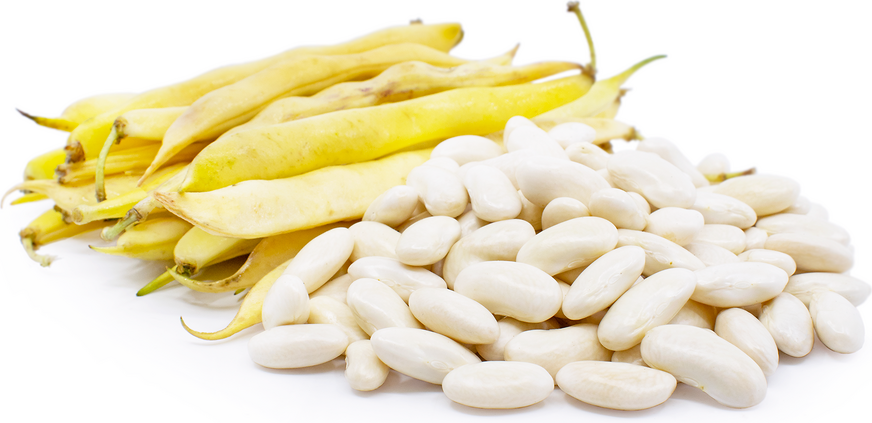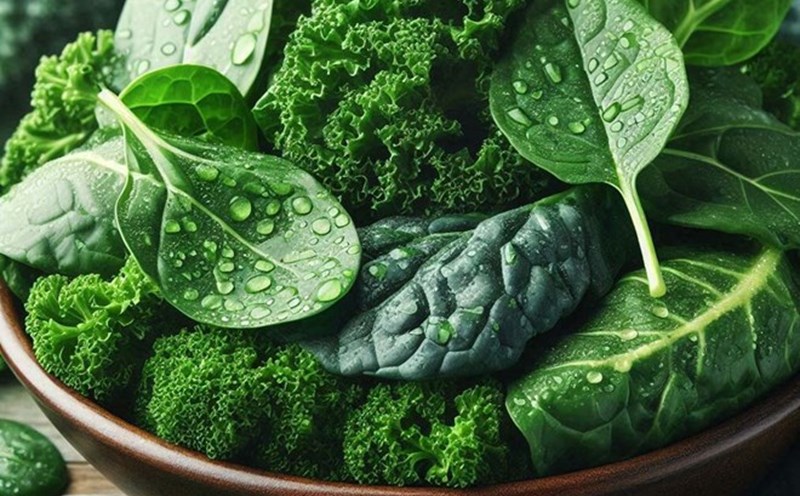 English
English“Superfoods” for Diabetics: Optimize Blood Sugar Control and Reduce Complications
Diabetes is one of the most common chronic diseases, affecting millions of people worldwide. In Vietnam, there are currently about 7 million people living with this disease. Of which, more than 55% of patients have experienced complications.
To control the disease, prevent and minimize complications, practicing a healthy lifestyle and maintaining a scientific and reasonable diet play a key role. In particular, “superfoods” are emerging as an optimal choice to stabilize blood sugar and reduce the risk of complications.

Nutrition is key in controlling diabetes
1. HbA1c in diabetes
HbA1c is a special type of hemoglobin that combines hemoglobin and glucose. HbA1C Hemoglobin, also known as hemoglobin, is an important component of cells that exist in red blood cells, responsible for transporting oxygen and glucose to cells in the body. The Hemoglobin A1c (HbA1c) test measures the amount of glucose attached to hemoglobin over the past 3 months, corresponding to the average lifespan of red blood cells, allowing to diagnose and monitor diabetes.

High HbA1c is a warning sign of diabetes
The higher the blood glucose level, the more glucose will be attached to hemoglobin. Therefore, a high HbA1c is a warning sign of diabetes. The World Health Organization (WHO) now recommends the use of the HbA1c test to screen and diagnose type 2 diabetes.
– HbA1c < 5.7%, is normal, not diabetic.
– HbA1c from 5.7% – 6.4% is a sign of prediabetes, meaning there is a high risk of developing diabetes.
– HbA1c ≥ 6.5% is the result of type 2 diabetes.
HbA1c test is the main test in people with diabetes to monitor blood sugar levels and assess the risk of complications. However, it should be noted that the HbA1c test cannot replace blood sugar test at the time, as blood sugar levels fluctuate continuously.
Adults should perform HbA1c test periodically to check their health, especially people over 45 years old and people with risk factors for diabetes such as being overweight, obesity, cardiovascular disease, family history of diabetes, women with a history of gestational diabetes, … should be checked more often to detect and control the disease promptly.
2. Blood sugar overview
The glycemic index (GI) is a measure of how quickly blood sugar levels rise after eating a food containing carbohydrates. Carbohydrate-containing foods are classified as having a low, medium or high GI, on a scale of 0 to 100.

Glycemic index (GI) of some foods
Many studies have shown that following a low GI diet enables reduction of blood sugar levels and effectively control blood sugar in people with type 2 diabetes. Therefore, diabetics should prioritize choosing foods with a low GI (such as whole grain oats, black bread, vegetables, beans) and medium GI (such as brown rice, millet porridge, barley bread, boiled sweet potatoes). At the same time, limit foods with a high GI such as white rice, sticky rice, boiled potatoes, watermelon and refined sugar,…
The glycemic load (GL) of a food is a measure of how much blood sugar rises after eating a serving of carbohydrate-containing food. Many diabetics only care about the glycemic index (GI), forgetting that eating a lot of low-GI foods can still raise blood sugar just as much as eating a small amount of high-GI foods.

The relationship between glycemic index (GI) and glycemic load (GL)
Therefore, in addition to have low GI foods, diabetics need to pay attention to glycemic load (GL) and control total GL in daily meals, which brings two important benefits:
– Better postprandial blood sugar control.
– It’s possible to enjoy your favorite foods even with high GI, but in moderation..
3. “Superfoods” – Role and mechanism of effects on blood sugar
The fact is that the term “superfood” is not officially recognized in science. However, in common conception, “superfood” is understood as foods rich in vitamins and essential nutrients, bringing many health benefits and allowing to prevent diseases.

“Superfoods” are understood as foods rich in vitamins and essential nutrients.
Diet has a direct impact on a person’s blood sugar levels, so maintaining a healthy, balanced diet not only helps stabilize blood sugar but also improves the patient’s overall health and reduces the risk of complications. Choosing foods rich in fiber, lean protein, and healthy fats, while limiting refined carbohydrates and added sugars, is key. In addition, controlling food portions and meal times also plays an important role in effective blood sugar management.
“Superfoods” are thought to have a positive effect on blood sugar through a number of different mechanisms.
First, the high fiber content in nuts, beans, and green vegetables allows the digestion and absorption of glucose to slow down, thereby minimizing the sudden spike in blood sugar after eating.
Second, some special compounds in “superfoods,” such as resveratrol and curcumin with the ability to improve insulin sensitivity, so the body use insulin more effectively to control blood sugar.
Finally, chronic inflammation is a major risk factor for many diabetes complications. “Superfoods” are often high in antioxidants, which reduce inflammation and protect the body from the negative effects of diabetes.
“Superfoods not only help control blood sugar but also bring many significant health benefits to people with diabetes. Studies have shown that supplementing with “superfoods” rich in antioxidants, fiber and other beneficial compounds can significantly reduce the risk of cardiovascular disease, which is a common complication in people with diabetes. Specifically, many “superfoods” have the effect of reducing bad cholesterol (LDL) and increasing good cholesterol (HDL), thereby improving blood vessel function and reducing the risk of atherosclerosis. A study published in the National Institutes of Health (NIH) showed that consuming berries containing high levels of anthocyanin flavonoids – a subgroup of polyphenols, is a powerful antioxidant, enables improvement of blood vessel function by creating vasodilator nitric oxide.

Berries contain high levels of flavonoid anthocyanins
In addition, “superfoods” also contribute to improving the overall health of people with diabetes. They provide a large amount of vitamins, minerals and antioxidants, which help strengthen the immune system and protect cells from damage caused by free radicals. This is especially important for people with diabetes, because they often have a weakened immune system and are susceptible to infections. Dark green vegetables such as kale and spinach are rich in vitamin K, vitamin C and folate, which strengthen the immune system and protect cells from damage.
4. Groups of “super foods” that are beneficial for people with diabetes
For diabetics to control blood sugar effectively and improve overall health, adding “superfoods” to their daily diet is essential. These “secret weapons” include nuts and beans, dark green vegetables, berries, spices, dark chocolate, etc. Let’s explore each group of “superfoods” in detail to better understand their benefits and how to use them effectively.
– Nuts such as almonds, walnuts, chia seeds and flax seeds are rich sources of monounsaturated fats, fiber and protein, bringing many benefits to diabetics. Scientific research has shown that consuming nuts helps reduce bad cholesterol (LDL), improve insulin sensitivity, and stabilize blood sugar. The fiber in nuts allows the absorption of sugar to slow down, preventing sudden increases in blood sugar after eating.
– Black beans, green beans, Cannellini beans (white beans), and lentils are “super foods” that are indispensable in the diet of people with diabetes. With high fiber and protein content, beans help create a feeling of fullness for a long time, limit cravings, and effectively control weight. Soluble fiber in beans also has the effect of slowing down the absorption of sugar, helping to stabilize blood sugar after eating. Protein in beans to maintain muscle mass, especially important for people with diabetes who often experience muscle loss. Research also shows that people with type 2 diabetes after three months of starting a healthy diet containing Cannellini beans have blood sugar levels reduced by half compared to others.

Cannellini beans – an indispensable “superfood” in the diet of diabetics
– Kale, spinach, and cabbage are dark green leafy vegetables that are rich in fiber, vitamins, and minerals, providing many benefits for people with diabetes. The fiber in vegetables helps control weight, improve digestive function, and stabilize blood sugar. Vitamin K, vitamin C, and folate in vegetables allow to strengthen the immune system, protect cells from damage, and reduce inflammation. However, people with diabetes should pay attention to choosing vegetables that are not high in starch, and should cook vegetables to reduce the risk of hyperglycemia.

Kale and spinach are dark green leafy vegetables rich in fiber, vitamins, and minerals
– Blueberries, strawberries, and raspberries are berries rich in antioxidants, especially anthocyanins, which have many benefits for people with diabetes. Research shows that anthocyanins are able to reduce the risk of heart disease by reducing LDL cholesterol and increasing HDL cholesterol. The fiber in berries slows down the absorption of sugar, preventing sudden spikes in blood sugar.
– Cinnamon, turmeric, and garlic are familiar spices that not only add flavor to dishes but also bring many benefits to people with diabetes. Studies have shown that they can help reduce blood sugar levels. People with type 2 diabetes who take cinnamon daily can reduce their blood sugar by 30% compared to those who do not take cinnamon. Turmeric contains curcumin, a powerful anti-inflammatory and antioxidant, and experts believe that all of the above activities of curcumin help reverse insulin resistance. However, people with diabetes should use these spices reasonably, combined with a healthy diet and lifestyle.
– Dark chocolate, with its abundant flavonoid content, has the potential to support blood sugar control for people with diabetes. Scientific studies show that flavonoids have the ability to improve insulin sensitivity, reduce insulin resistance, and thereby stabilizing blood sugar levels. In particular, the darker the chocolate, the higher the flavonoid content, making it an ideal choice for people with diabetes. However, it should be noted that only pure dark chocolate should be consumed in moderation, about 40-60 grams at a time, 2-3 times a week. At the same time, checking blood sugar before and after eating dark chocolate is necessary to assess individual effects and adjust the appropriate consumption amount.

Dark chocolate supports blood sugar control for diabetics
In the journey to control blood sugar, choosing a specialized nutritional product is extremely important. Glucare Gold is a specialized nutritional solution according to US standards for people with diabetes and pre-diabetes. The product has a low glycemic index that has been clinically proven thanks to the advanced slow-absorbing carbohydrate system, including Isomaltulose & Erythri-tol. Glucare Gold supports stable blood sugar control, avoid sudden increase in blood sugar after drinking and hypoglycemia between meals. Not only that, the product also supplements 56 essential nutrients including vegetable protein and whey protein from the US to improve health. Omega 3,6,9 & Antioxidant system help reduce cardiovascular complications, prevent stroke with Lactium which has been clinically proven to support good sleep. Daily consumption of 2 Glucare Gold glasses enables balance of blood sugar, improve resistance and reduce the risk of complications of diabetes.
“Superfoods” can be considered “secret weapons” that effectively support diabetics in controlling blood sugar and improving overall health. With diverse mechanisms of action, from reducing glucose absorption, improving insulin sensitivity to reducing inflammation, “superfoods” open up a new direction in diabetes management.
However, to optimize effectiveness and ensure safety, personalizing the diet is extremely important. Patients should proactively consult a doctor or nutritionist to develop a scientific eating plan, suitable for their specific health condition. By incorporating “superfoods” into a healthy diet, people with diabetes can improve their quality of life and reduce the risk of complications.
| References
2. https://umcclinic.com.vn/xet-nghiem-hba1c-la-gi 3.https://viendinhduongtphcm.org/Media/Tai_lieu_chuyen_mon/Dinh_duong_noi_khoa/GI_GL.pdf 4. https://www.pharmacity.vn/cong-dung-chat-xo-voi-cac-benh-man-tinh.htm 5.https://www.vinmec.com/vie/bai-viet/14-cach-tu-nhien-de-cai-thien-do-nhay-cam-voi-insulin-cua-ban-vi 6. https://www.vietnam.vn/thuc-pham-chua-nhieu-chat-chong-oxy-hoa-giup-chong-viem 7. Festa J, Da Boit M, Hussain A, Singh H. Potential Benefits of Berry Anthocyanins on Vascular Function. Mol Nutr Food Res. 2021 Oct;65(19):e2100170. doi: 8.1002/mnfr.202100170. Epub 2021 Aug 16. PMID: 34346156. 9. https://www.vinmec.com/vie/bai-viet/rau-bina-va-cai-xoan-cai-nao-tot-hon-vi 10. https://tamanhhospital.vn/?p=226459 11. https://bvnguyentriphuong.com.vn/dinh-duong/thuc-pham-danh-cho-nguoi-benh-tieu-duong 12. https://www.vinmec.com/vie/bai-viet/chat-chong-oxy-hoa-trong-thuc-pham-la-gi-vi |
